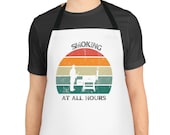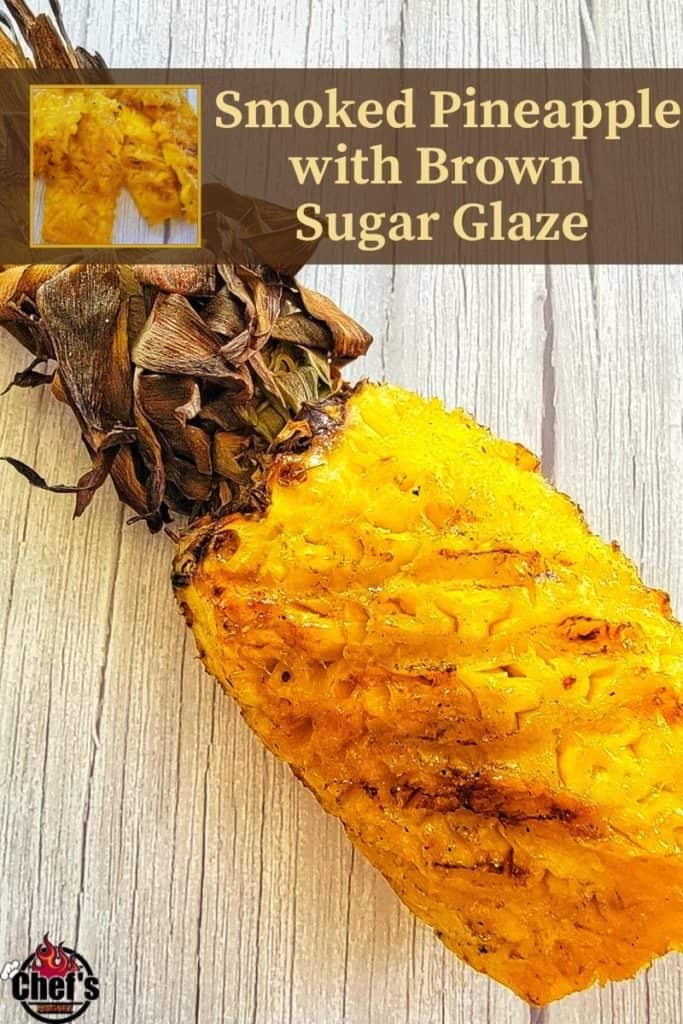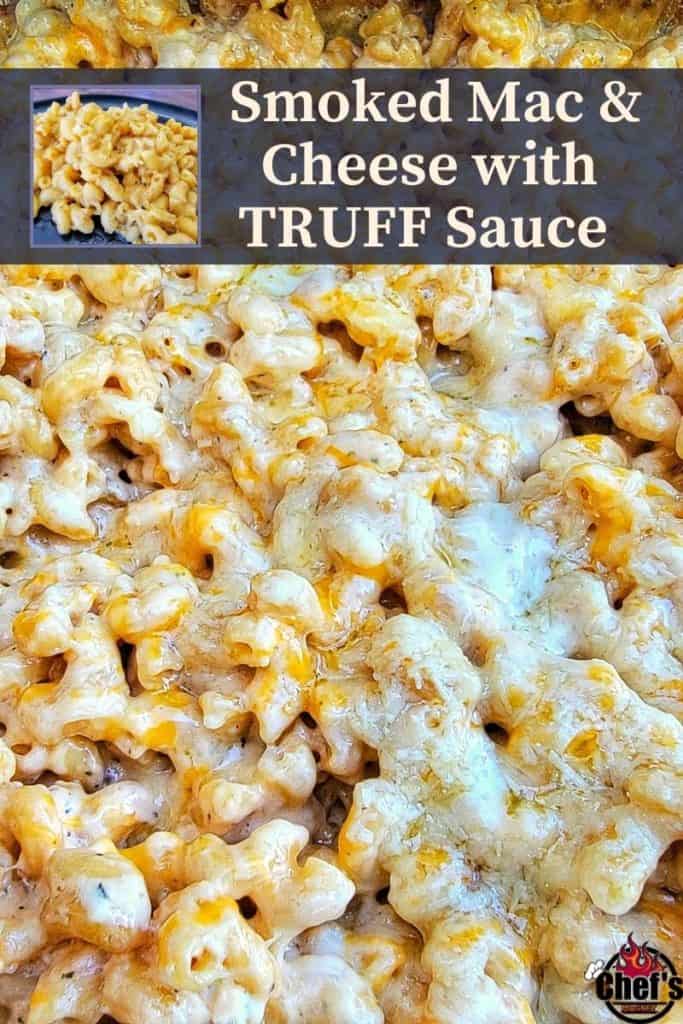A cutting board is one of the kitchen’s most essential and used tools. Cutting boards are important for protecting your countertop and preparing meat, poultry, and more. To avoid cross-contamination, you’ll need to designate different cutting boards for various tasks—one for preparing meat and another for vegetables. Like the other kitchen tools and appliances, your wooden cutting board needs a thorough cleaning. How to clean a wood cutting board is a commonly asked and searched question.
Clean a wood cutting board by starting with soap and water, then disinfect to remove bacteria, scrub out the stains, remove odors from pores, and finish with oil and conditioner.
Let’s break down each of these steps and answer the commonly asked questions about cleaning, restoring, and maintaining a great wood-cutting board.
Invest in a High-Quality Cutting Board
The cutting board is one of the go-to tools in the kitchen. Your cutting board experiences almost daily use for food preparation. You will want to make sure this integral piece of your kitchen performs and looks great by investing in a high-quality wood cutting board.
You can find great options online or at your local kitchen goods store. I prefer a butcher block style, so the wood is easier on my sharp knives. Here are a few options on Amazon that have great reviews and comments.
Mistakes to Avoid When Cleaning Wood Board
Using improper cleaning techniques and caring for a wooden cutting board can damage it. Here are some common mistakes to avoid:
- Don’t use your dishwasher to clean your cutting board. Too much contact with water will cause the wood to swell. This results in separated fibers and cracks in the wood.
- Don’t rest a wet cutting board flat on any surface to dry. While the wood lays flat, water gets trapped, and moisture is locked, resulting in bacteria buildup.
- Don’t let stains go untreated. Remove stains as soon as possible. Stains become more difficult to remove over time.
What Will You Need to Clean a Wooden Cutting Board
- A metal spatula or bench scraper: Use this to remove stuck-on food gently. Using a lemon with salt paste to remove odors will help you remove the dried salt.
- A mild dish soap. We recommend using Seventh Generation Dish Liquid Soap, Free & Clear.
- A sponge. We recommend the Scotch-Brite Heavy Duty Scrub Sponges.
- A clean dish towel and paper towels.
- Food-grade mineral oil, beeswax, or a blend. We recommend these products by Howard. Howard’s Cutting Board Oil Mineral Oil and Howard’s Conditioner with wax.
- Kosher salt and a lemon or distilled white vinegar. This is used to deodorize your board if it has become stinky.
- Baking soda: Use this to remove tough stains on your board.
How Long Does This Take
Keeping up with cleaning every day or after every use usually takes only a minute or two. The same is for oiling and waxing the board which you should do about once a month, depending on the type of wood and the climate you live in. Once the oil is applied, it will take several hours to absorb into the wood.
How to Oil and Wax Your Wooden Cutting Board
Wood will naturally dry out after recurrent washings, so you need to oil and wax the wood to prevent it from cracking and becoming brittle. Properly conditioning your wood also creates a defensive barrier against moisture, which helps keep the board clean and makes it less likely to crack or warp. Conditioning the board also helps prevent it from absorbing odors and staining.
There are many ways to condition a cutting board. If you have the preferred method that works well for you or a set of oils or waxes you like, keep using them. The process we want to use comes from the Howard Products line.
We use Howard Cutting Board Oil, made with clear, odorless, pure food-grade mineral oil. It’s safe for all wood surfaces that come in contact with food and will never go rancid. Also, we use their Butcher Block Conditioner, a combination of food-grade mineral oil, beeswax, and carnauba wax. It is ideal for conditioning and maintaining all wooden butcher blocks, cutting boards, wooden bowls, and utensils. The penetrating quality of food-grade mineral oil and the water-resistant traits of beeswax and carnauba wax help to rejuvenate the wood and prevent drying.
Steps to Oil and Wax a Wood Cutting Board
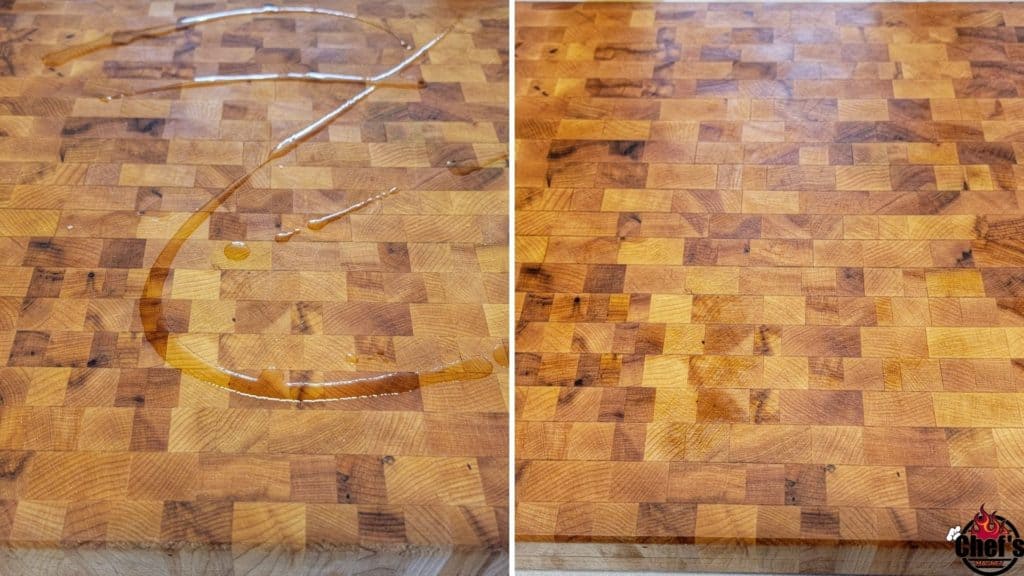
- Season unfinished wood surfaces by applying at least 2 coats of Cutting Board Oil. Let each coat soak in for at least 20 minutes. For thick wood surfaces (like countertops), apply 3-4 coats and let each coat soak in for at least an hour.
- Make sure to spread Cutting Board Oil evenly with a soft cloth.
- Apply Cutting Board Oil to the edges of the board. Then let it soak in for at least 20 minutes.
- Apply another coat of Cutting Board Oil. Make sure to get any dry areas that may have been missed in the first application.
- Spread Cutting Board Oil evenly on the wood surface and let it soak for another 20 minutes.
- After seasoning with Cutting Board Oil, apply Butcher Block Conditioner. The conditioner helps protect the wood by keeping the mineral oil and moisture out.
- Spread the conditioner evenly with a soft cloth. Make sure to get the grooves and sides of the board.
- After 20 minutes, wipe off any excess Butcher Block Conditioner and buff the wood to a nice sheen.
- If the bottom of the board looks dry, apply a coat of Butcher Block Conditioner. Apply more conditioner whenever the wood looks or feels dry.
How Often Should You Oil and Wax Your Cutting Board
Like watering plants, there’s no single schedule for oiling boards—it depends on how frequently you’re using your board, the environment in which it is stored, and the type of wood. Once a month is a good place to begin, but there is no harm in oiling your board whenever it looks thirsty. How can you tell if your cutting board is thirsty? Sprinkle a few drops of water onto the board with your fingertips. The water will bead up when the wood is sufficiently oiled. If the water soaks into the wood or disperses, the wood needs more oil.
Mildew on a Wooden Cutting Board
If your board develops mildew (usually, this looks like clusters of small black spots), it is time to throw it away. Mildew usually looks like clusters of small black spots resulting from inadequate drying before storing. According to Allison Samuels, founder of Two Trees Studios, “mildew tends to collect on the very perimeter of the board, which is where you’ve been standing it up to dry.” If you want to salvage your board, the pros recommend contacting a professional woodworker for advice or sanding off the mildew. However, Samuels cautioned that you want to be sure you’re sanding down enough of the wood to remove all of the mildew; otherwise, it may return.
Sanitizing a Wooden Cutting Board
In most cases, soap and hot water cleaning your cutting board are sufficient. You don’t need to disinfect a wooden board unless you’re using it to prepare raw meat. We recommend you use a separate plastic board for meat, seafood, or poultry and a wood board for everything else. Plastic boards can be easily sanitized with a chlorine bleach solution or washed in the dishwasher without damaging them. I love using a plastic cutting board because I give it a rinse and let the dishwasher clean it. Using a separate board also helps prevent the risk of cross-contamination.
The USDA suggests using chlorine bleach and water solution to sanitize boards. However, this method can cause your board to dry out and become discolored, so we don’t recommend it.
You may have heard about cleaning your board using distilled white vinegar. It’s not registered as a disinfectant with the Environmental Protection Agency since the vinegar will only remove dirt and debris and won’t sanitize the surface. In other words, it will not kill microorganisms. However, a vinegar solution can help remove strong odors from your board.
How to Clean a Wooden Cutting Board
ONE: Begin with Soap and Water
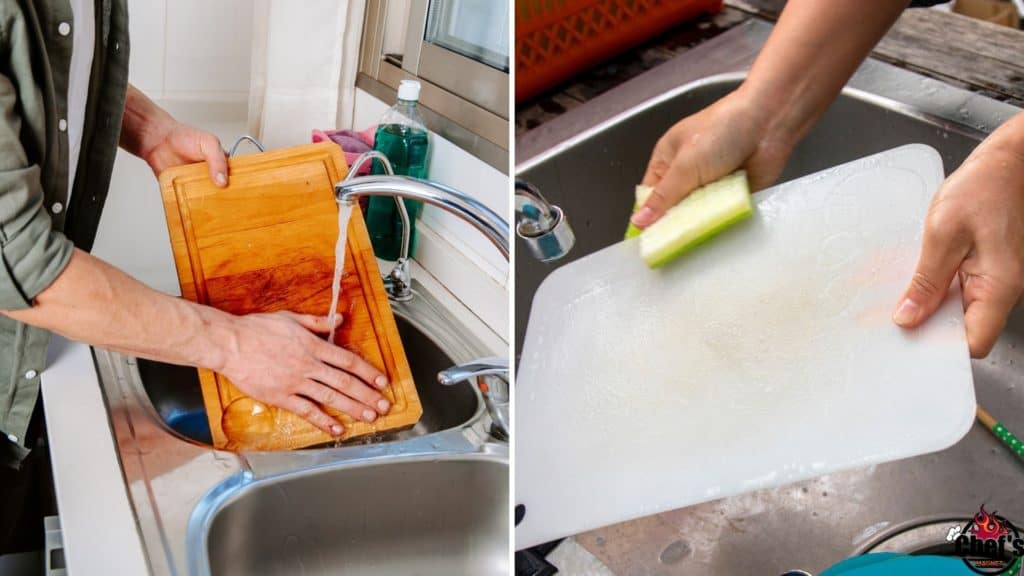
The first step in cleaning wood cutting boards is using soap and water, as you would when washing other dishes. Scrub the entire wood surface with a clean sponge and thoroughly rinse off both sides. Be sure to remove any remaining food particles or soap suds.
TWO: Disinfect to Remove Bacteria
Blemishes occurring naturally from regular daily use can lead to bacteria growing inside the cuts and scratches on the wood board surface.
Remove any persistent bacteria using a disinfectant such as pure white vinegar or diluted bleach. Dip a cloth in your chosen solution and wipe off the wood surface on all sides.
You can also soak your wood cutting board in the disinfecting solution. However, it is recommended that you only let it sit for a few minutes. A lengthy soak can cause damage or imperfections to your cutting board.
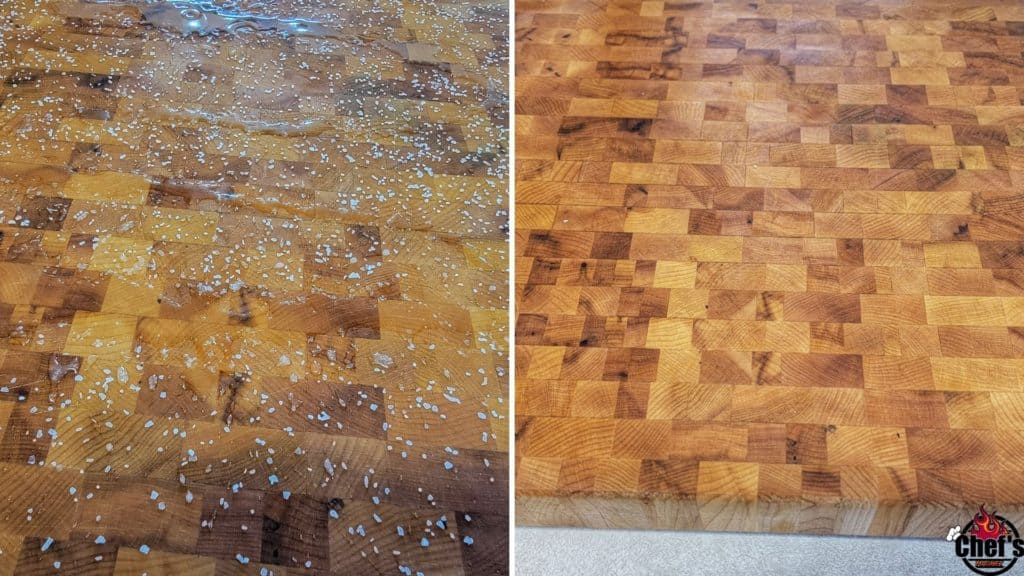
THREE: Scrub and Remove Stubborn Stains
Stains can happen very easily on wooden cutting boards from food preparation. This is particularly true when using foods such as tomatoes or strawberries. If you notice a stain on your cutting board, it’s a good idea to take action quickly. Stains become harder to remove over time.
Start by sprinkling a liberal portion of salt or baking soda on the cutting board surface. Then, take a brush or sponge, soak it in hot water, and scrub the impacted area until the stain is gone. Cut a lemon in half, sprinkle salt on the flat side, and then scrub the stained area for an extra touch and fresh aroma.
After removing a stain, rinse off your wood-cutting board under lukewarm water for a few minutes. To remove any excess moisture, pat dry with a towel.
FOUR: Remove Odors From the Pores
To eliminate unpleasant sour or mold-like odors from the pores of the wood cutting board, mix a cup of baking powder and a cup of white vinegar to create an oxidizing agent and apply it to the board with a cloth. Another option is using half a lemon and scrubbing the surface of the wood while holding the rind. This releases the natural juices. After either option, let it sit on the cutting board for a few minutes before rinsing the board with water.
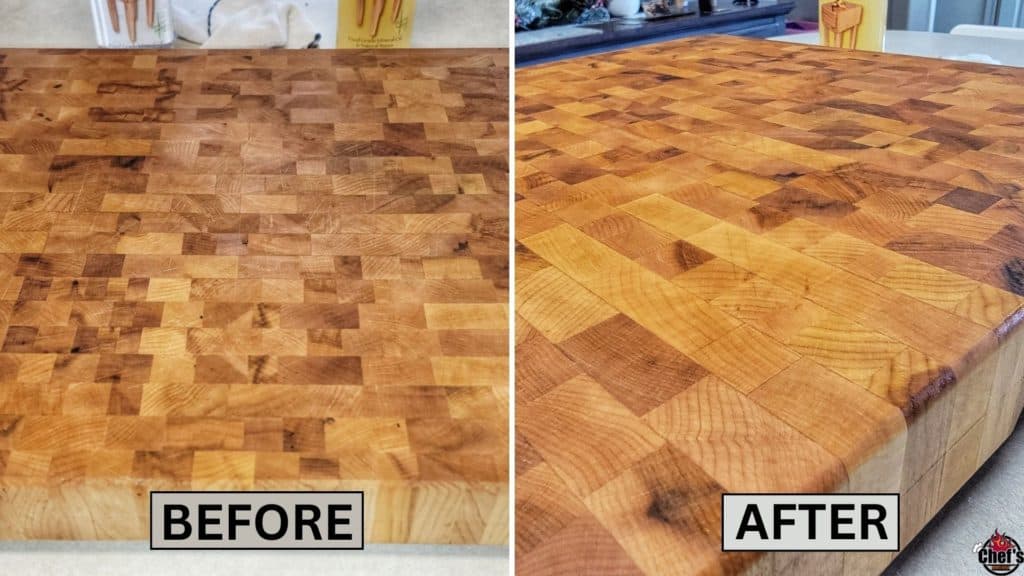
FIVE: Finish with Oil and Conditioner
After cleaning your wood-cutting board and removing food particles, stains, and odors, you can additionally treat your wood-cutting board by applying a quality food-grade mineral oil and conditioner. These products will maintain the appropriate moisture level and prevent the wood from drying and cracking. This step was explained in detail above.
Below is a Pinterest friendly photo…. so you can pin it to your favorite Smoking Food Board!!
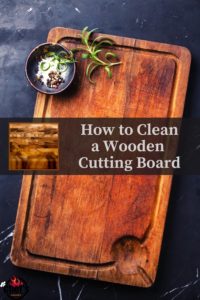
Check out some of our top recipes below.
Bon Appétit

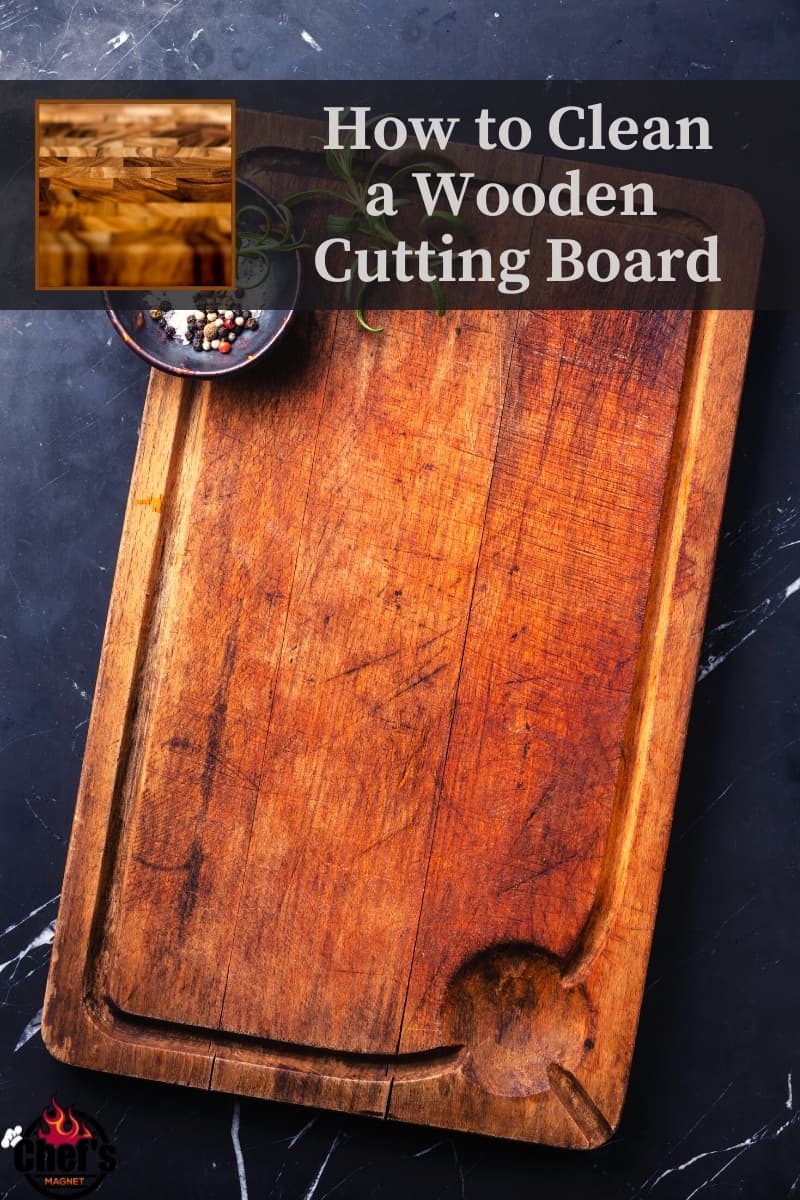


![Personalized Science T-Shirt, [NAME] Eats Bacon Periodically, Science Gift For Teachers, Gift For Dad](https://i.etsystatic.com/39088648/c/677/537/250/479/il/81da41/5524136388/il_170x135.5524136388_ejht.jpg)
![Personalized Funny BBQ Gift T-Shirt, [NAME] Likes To Smoke Food It Gives Him A Reason To Play With Fire, Gift For Men, Gift For Dad](https://i.etsystatic.com/39088648/c/715/567/310/398/il/df3b57/5524134348/il_170x135.5524134348_l4vh.jpg)
![Personalized Funny BBQ Gift T-Shirt, [NAME]'s Addicted To Smoking, Gift For Men, Gift For Dad](https://i.etsystatic.com/39088648/c/688/546/321/419/il/04f17e/5572258249/il_170x135.5572258249_loz4.jpg)
![Personalized Option Funny BBQ Gift T-Shirt, Don't Worry I Got This I Watched A YouTube Video, Quite by [NAME] Gift For Men, Gift For Dad](https://i.etsystatic.com/39088648/c/1451/1152/714/207/il/eecec9/5524515802/il_170x135.5524515802_qbvj.jpg)


![Personalized Funny BBQ Gift Mug, Don't Worry I Got This I Watched A YouTube Video, By [NAME], Gift For Men, Gift For Dad](https://i.etsystatic.com/39088648/c/2982/2368/0/27/il/cf62b0/5272771721/il_170x135.5272771721_pz0h.jpg)

![Personalized Science Apron, [NAME] Uses [Pronoun] Smoker Periodically, Science Gift For Teachers, Gift For Dad](https://i.etsystatic.com/39088648/c/2982/2368/0/9/il/6bf723/5272542103/il_170x135.5272542103_18nf.jpg)
